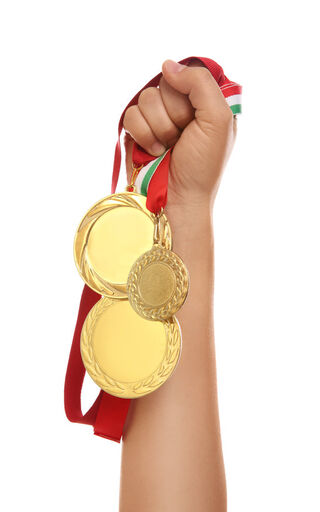Attention
What Women Olympians Wear
The sexualization of women's clothing and the Olympic double standard.
Posted August 6, 2021 Reviewed by Gary Drevitch

When the first modern Olympic Games took place in 1896, women weren't allowed to participate. In 1900, of a total of 997 athletes, only 22 women competed in five sports: tennis, sailing, croquet, equestrianism, and golf. This began a tradition of treating women athletes differently than male athletes. Fast forward to today, and controversy continues on several fronts.
Female athletes have drawn attention to numerous incidents they say left them feeling shamed or sexualized. For example, double Paralympic world champion Olivia Breen said this month she was left "speechless" when an official at the English Championships told her that her sprint briefs were "too short and inappropriate."
"It's just wrong. We were not living in the 18th century. We're living in 2021," Breen said in an interview via video chat. "For me personally, I want to be as light as possible so I can jump out, run faster." In a statement posted to Twitter, Breen questioned whether a male competitor would be similarly criticized. The female official's comment "really shocks me and makes me really cross," Breen wrote. "I just thought, that needs to change."
Experiences like Breen's are nothing new for female athletes, who regularly find themselves reprimanded for wearing too little, or too much, clothing.
The Norwegian women's beach handball team was fined for "improper clothing" after players opted to wear shorts instead of bikini briefs during a European championship game in Bulgaria. Their clothing failed to meet the European Handball Federation's requirements that briefs have "a close fit and cut on an upward angle toward the top of the leg. According to International Handball Federation (IHF) regulations, female athletes must wear bikini bottoms with a maximum side width of 10 centimeters (3.9 inches) — a "close fit." However, the dress code allows male athletes to wear shorts "not too baggy" and 10 centimeters above the kneecap.
"We have no idea why those rules are as they are," said Julie Aspelund Berg, a defender with Norway's beach handball team, during a phone call. "Why can't we just wear shorts (when) we can manage the job just as good as in bikinis?"
Berg explained that her team knew they would be fined but preferred to compete in shorts instead of bikini bottoms because the bikinis can ride up and leave them feeling exposed. But maybe that is what the Federation wants for its viewers. Maybe they would prefer the female athletes to show a little more leg and bottom.
"With those bikinis, we were all the time checking if it's in the right place. We were focusing on other things than the sport — and that's not something we want," she said. "We just want to be treated at the same level as the guys."
The situation quickly gained worldwide attention and caught the attention of singer Pink, who offered to pay the team's fines and said the European Handball Federation (EHF) should be fined for sexism.
Following the worldwide backlash, the EHF and the IHF later confirmed that female uniforms would be discussed by the newly elected Beach Handball Commission in August. Unfortunately, that's not an isolated example. International sports federations have for a long time dictated confusing and nonsensical rules about what women can wear. In contrast, men are given more choice and freedom.
The incident is just another example of the "conflicting messages" women are faced with, said Stephanie Hilborne, CEO of Women in Sport, during a phone interview. "Wear less, wear more. It's a bit like the tightrope that women are forced to walk through a lot of aspects of life." Women are getting sick and tired of it, and so are viewers who prefer to focus on athletic ability. We owe the Norwegian handball players gratitude for drawing attention to the rigid and sexist rules women must confront.
Women have long struggled for the right to participate in sports — and to gain recognition solely for their achievements. For years, women athletes have felt pressure to dress a certain way. Women boxers were almost forced to wear skirts to distinguish them from men, but the International Amateur Boxing Association backed off. Badminton officials took longer to drop the skirt requirement for women, and one official claimed he wanted "them to look feminine and have a nice presentation so women will be more popular."


